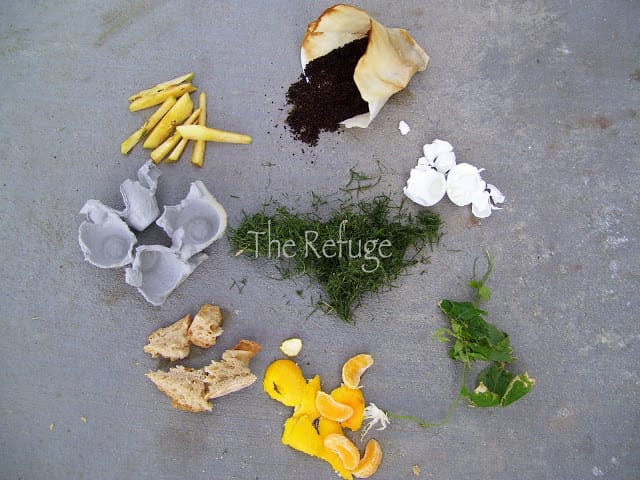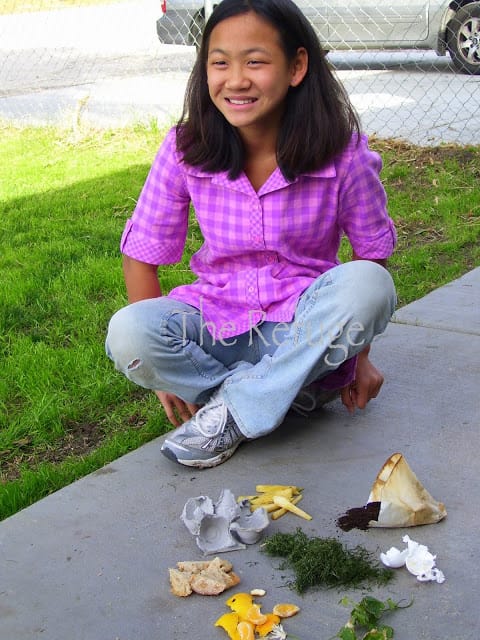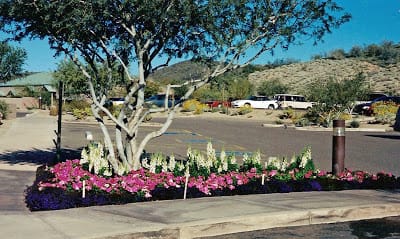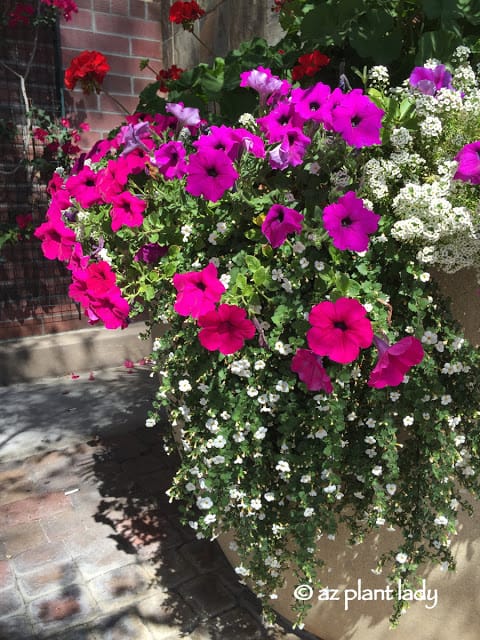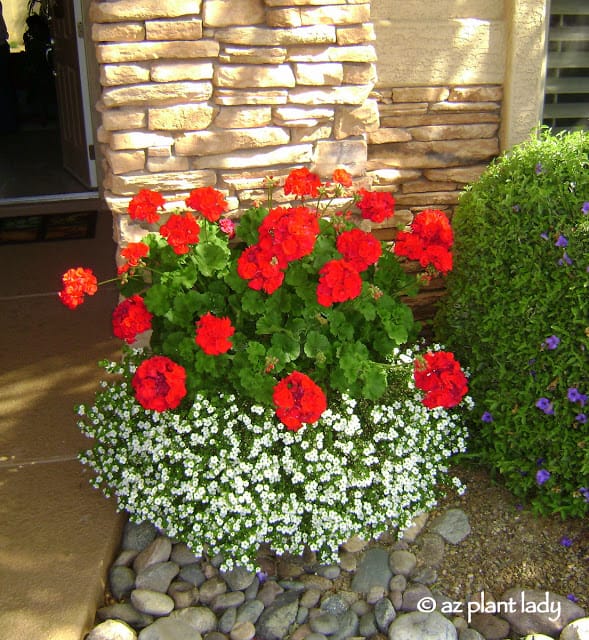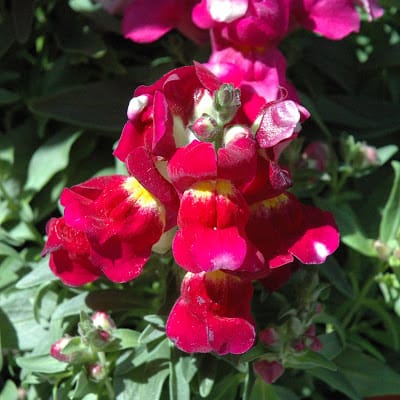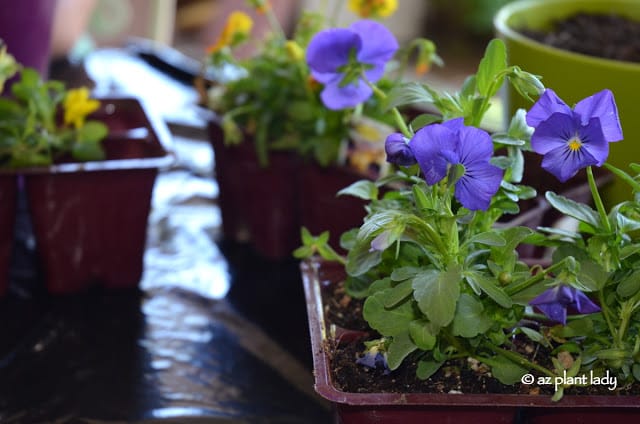I must confess that I have avoided going out into my garden.
Now, I love my garden and spending time outside tending my plants. But, not when we have had record-breaking heat. I normally don’t have a problem with the summer heat and I don’t like to complain about it.
It’s not so much the heat itself, but when it is coupled with bright sunlight, it can be hard to bear if you are working out in the garden for an extended length of time.
So, I have been waiting impatiently for the temps to get back down to normal so that I can get out and get my vegetable garden ready for fall planting. It is almost too late for me to plant my fall sweet corn.
Well, since the weather was not going to cooperate and I refused to be overcome by the heat, I had to take matters into my own hands.
I asked my husband to hang a light outdoors by the garden so that we could work out there at night.

My daughter, Ruthie, loves to work in the vegetable garden and was helping us to rip out some of the old summer vegetable plants that had stopped producing.
Believe it or not, gardening at night is not all that hard as long as you have some light source. We made quick work of cleaning out the vegetable garden, adding compost, manure, blood meal and bone meal.
Now it was still hot outside, but the sun was down, which really makes a big difference.
As we were working in the garden, we had a little visitor who came out to see what we were doing….
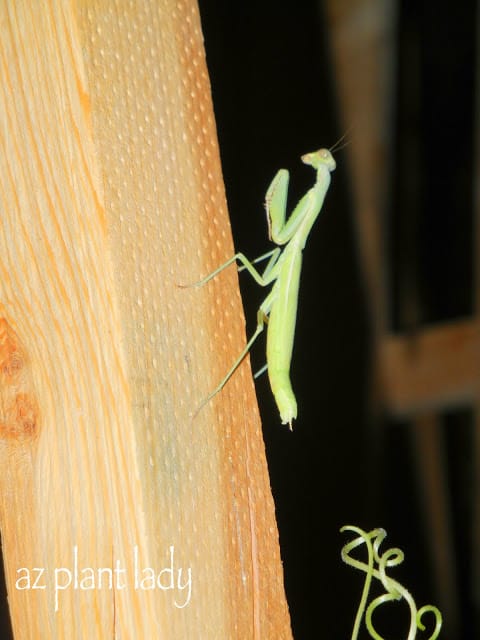
Gardening at Night, He was actually hanging upside down, but I like how he looks ‘right side up’.
This praying mantis was fascinated by what we were doing. I was very happy to see him because he helps to eat the harmful insects that would normally bother my vegetables.
He was soon joined by his friend or maybe it was his wife?
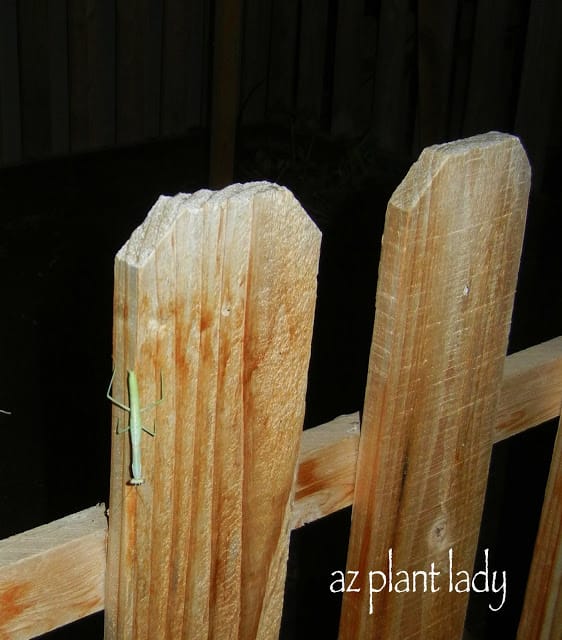
Gardening at Night
We were soon finished with our work and I could hardly wait to see the fruits of our labor in the morning….
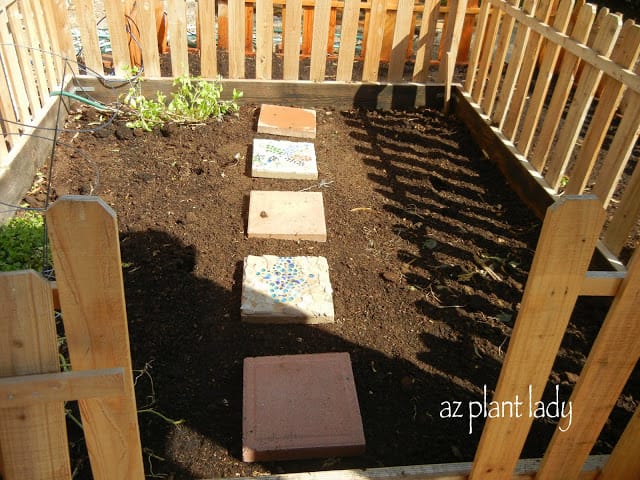
I just love a blank canvas to add plants to, don’t you?
The step stones provide easy access for me to step out into the garden to harvest vegetables without crushing them with my feet.
(Once I took out the step stones, thinking I wanted the extra space for vegetables, but I had an awful time getting into and out of the garden without stepping on vegetables.)
We did leave the basil plant in the back, oregano on the side and a single cucumber plant, which will continue to produce once the temperatures cool down (I’m not sure it will ever cool down again).
I have wonderful plans for my vegetable garden….
I can hardly wait to harvest fresh corn, carrots, green snap beans, garlic, green onions, leaf lettuce and spinach.

You may wonder why I have a fence around the garden. Well, the reason is that I have a little dog named Tobey that would love nothing better then to get inside and dig around in all the wonderful smelling compost and aged steer manure.
Now, I was bound and determined to get one thing planted in the garden, even if it was hot outside and I would probably start to sweat 😉

I got my corn seeds planted!
It only took me about 15 minutes to plant 3 rows of corn.
(It is important to plant corn in more then one row, which helps with pollination and helps all of the corn kernels to develop).
As you can see, I didn’t bring out any fancy tools to plant them. I only needed a ruler to make sure that I planted them 1 ft.
apart and I borrowed a spoon from my kitchen.
Thankfully, I can wait until later this month to plant some of my other seeds when the weather is cooler.
Some people may think I am crazy to work in the garden at night and there are some things that you do have to have daylight for. But I have pruned my shrubs at night to avoid the excess heat of the day.
I wouldn’t advise doing any gardening tasks that require any detail work, such as planting vegetable seeds.
But, you never know….if it doesn’t cool off on time, I may be planting seeds at night with a flashlight 😉
******************
So, how about you?
Do you have any strategies for dealing with the summer heat when you garden?


